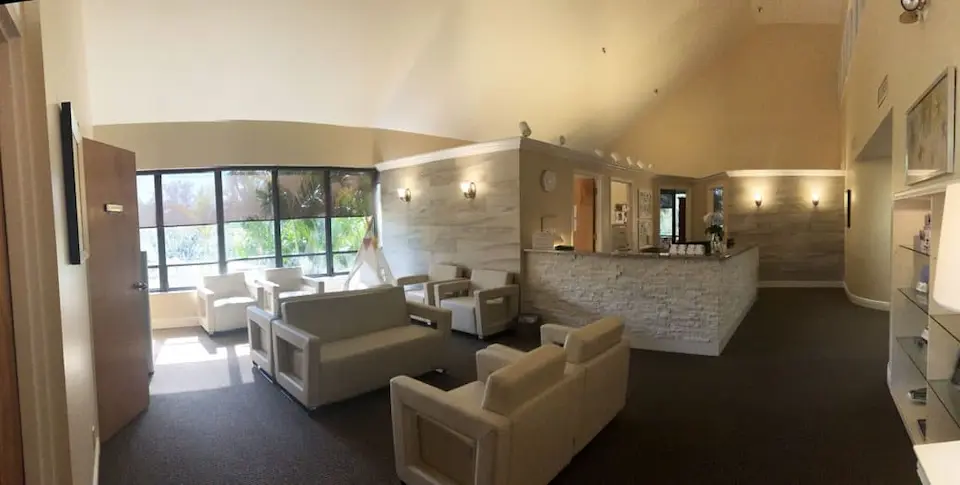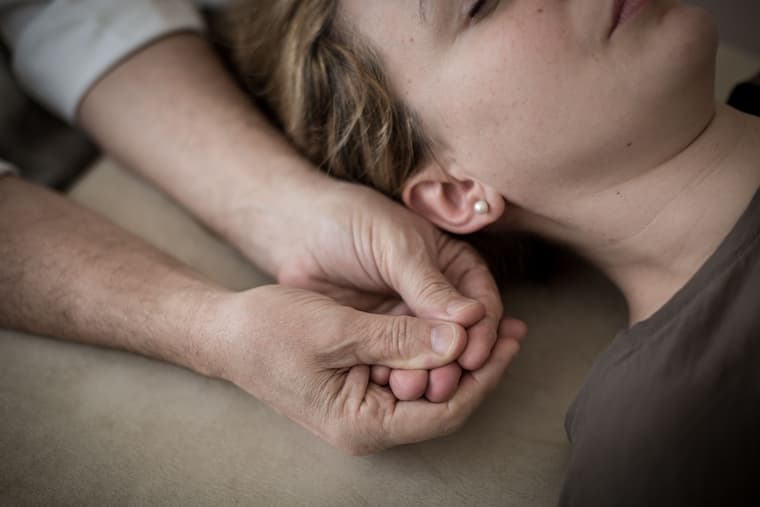"Why should it surprise us that we can tap into the body's own inner wisdom to facilitate a positive response through the use of our hands and an innate desire to help? In my mind, that is health as it was meant to be - a natural collaboration between two human beings on a multitude of different levels, all simply allowing the body to do what it was born to do best."
The craniosacral system (a physiological system like the cardiovascular and respiratory systems) provides the physical environment in which the brain and spinal cord develop and function. The light-touch technique works with natural and unique rhythms of our different body systems to pinpoint and correct source problems.
(SER) is a therapeutic process that expands on the principles of CranioSacral Therapy to help rid the mind and body of the residual effects of trauma. Joint research efforts by Dr. John Upledger and biophysicist Dr. Zvi Karni led to the discovery that the body often retains (rather than dissipates) physical forces. This is often the result of an accident, injury, or emotional trauma. The dysfunctional area is isolated, creating what is called an "energy cyst". Although a reasonably healthy body can adapt to "energy cysts," extra energy is required to perform normal bodily functions. As time passes, the adaptive pattern of the body loses its effectiveness. Symptoms begin to appear and, over time, become more difficult to suppress. The SomatoEmotional Release process requires extreme sensitivity on the part of the therapist and a positive attitude and trust from the client/patient.
Visceral Manipulation
The visceral system relies on the interconnected synchronicity between the motions of all the organs and structures of the body. At optimal health, this harmonious relationship remains stable despite the body's endless varieties of motion. But when one organ cannot move in harmony with its viscera due to abnormal tone, adhesions or displacement, it works against the body's other organs and muscular, membranous, fascial and osseous structures. This disharmony creates fixed, abnormal points of tension that the body is forced to move around. And that chronic irritation, in turn, paves the way for postural distortion, neuromuscular dysfunction, and disease processes.
Neural Manipulation
Neural Manipulation as developed by Barral and Croibier examines mechanical relationships between the cranium/spine hard frame to the dura and neural elements. It provides assessment and treatment approaches to address restrictions of the dural and neural components not commonly focused on with musculoskeletal symptoms. Neural Manipulation identifies and releases local nerve restrictions while at the same time examines the effect these local fixations have on the rest of the body, and by accessing this relationship, resolves the more comprehensive (global) dysfunctional patterns.
Chiropractic is based on the science which concerns itself with the relationship between structures (primarily the spine) and function (primarily of the nervous system) and how this relationship can affect the restoration and preservation of health. Chiropractic adjustments (aka spinal and joint manipulative therapy) are made by chiropractors in order to correct or reduce spinal (vertebral) subluxation and extremity joint subluxations. Vertebral subluxation is a disturbance to the nervous system and is a condition where one or more vertebra in the spine is misaligned and/or does not move properly causing irritation to the nervous system.
The primary goal of chiropractic care is the removal and/or reduction of nerve interference caused by vertebral subluxation. The chiropractic adjustment is the application of a precise moment and/or force into the spine in order to reduce or correct vertebral subluxations. Chiropractic adjustments are applied mainly to the spine but can be used for other joints. This will be done by hand or with a mechanical instrument upon the body in such a way as to move the joints of the spine and upper and lower extremities. This may cause and audible "pop" or "click", just the same as when one "cracks" their knuckles. You may feel a sense of movement. Among other things, chiropractic care may reduce pain, increase mobility and improve quality of life.
Manual Lymphatic Drainage (MLD) is a gentle, hands-on technique used to enhance the flow and functioning of the lymphatic system. Small, wave-like movements are used to stimulate the contraction of tiny muscles located along the lymphatic vessels. Therapists who are trained in the anatomy of the lymphatic system are able to detect the rhythm, quality, depth, and direction of lymphatic flow.
Through this process a greater amount of metabolic waste products and fluid from the body’s tissues are drained so the body is able to detoxify. Healing is improved when there is elimination of any fluid stagnation, and nutrients are able to be delivered to the tissues which are then allowed to regenerate.
Lymph nodes
- Filter and purify lymph
- Capture and destroy toxins
- Produce lymphocytes
- Lymph fluid presses through nodes
- There are 400 to 700 nodes in the human body
Sensory Integration (SI) is something most of us do automatically and without thought. In fact, it occurs so automatically that most of us take it for granted. We take in sensory input from our external environment through our senses of touch, sound, sight, smell, taste and movement.
CranioSacral Therapy can be a highly favorable adjunctive therapy to pair with Sensory Integration Therapy. CranioSacral Therapy can benefit a child with SI because it works directly on the nervous system.
CranioSacral Therapy is a non-invasive technique that facilitates the body's own healing process. Used in conjunction with Sensory Integration Therapy or alone, CranioSacral Therapy can lay the groundwork for improved neurological functioning, processing and integration of sensory information.
What is Sensory Integration Dysfunction?
Sensory Integrative Dysfunction is a complex neurological disorder that occurs when the brain is unable to correctly process information that comes in through the senses. Sensory integration is the critical brain function responsible for producing a composite picture of who we are, where we are, and what is happening around us.
Some of the signs that a child may have Sensory Integration Dysfunction include:
- Oversensitivity to or avoidance of touch, sound, movement, smell, tastes and sights
- Conversely, under-reactivity to touch, sound, movement, smell, tastes and sights
- Challenges with coordination, especially both sides of the body
- Poor muscle tone
- Speech and language difficulties, learning challenges
- Difficulty with transitions or changes in routine
- Impulsivity or distractibility
- Clumsiness or visual problems
- Behavioral problems including both social and emotional issues
- Extreme activity level (hyperactive or very sedentary)
- Delays in motor skills early on or at a later date
- Problems sequencing
- Problems with self-care and play skills
How CranioSacral Therapy Can Help:
More than 80% of the children who come to The Upledger Institute Clinic for treatment suffer from some sort of SI deficit. That's why it is crucial that each child is assessed on an individual basis no matter what their diagnosis is.
Therapeutic strategies to treat Sensory Integration Dysfunction use approaches rich in vestibular, proprioceptive and tactile inputs – the very same areas where children with neurological issues have deficits. CranioSacral Therapy is a non-invasive technique that facilitates the body's own healing process. Used in conjunction with Sensory Integration Therapy or alone, CranioSacral Therapy can lay the groundwork for improved neurological functioning, processing and integration of sensory information.
Take A Tour of Upledger Clinic
The tour is designed to welcome you to our clinic where you will be guided by one of our therapists. You will meet our receptionist, view a treatment room, experience a demonstration of the light touch of CranioSacral Therapy and learn about all the therapies offered at the clinic. You will see the office of Dr. John E. Upledger, the developer of CranioSacral Therapy, the classroom where instruction takes place, and hear about our global connection. The tour lasts approximately one hour. To reserve a space, call us at 561-622-4706.


Learn about the Dr. John E. Upledger Foundation programs
The Dr. John E. Upledger Foundation was formed to raise awareness, support and treatment for CranioSacral Therapy and its benefits to those suffering from a wide range of medical problems associated with pain and dysfunction and other conditions including Concussions, TraumaticBrain Injury, Autism and Post-Traumatic Stress. TheFoundation's Cancer Therapy Support program provides complimentary CranioSacral Therapy (CST) treatment sessions for cancer patients.